Instruction
6 keys to coaching the current generation of junior golfers
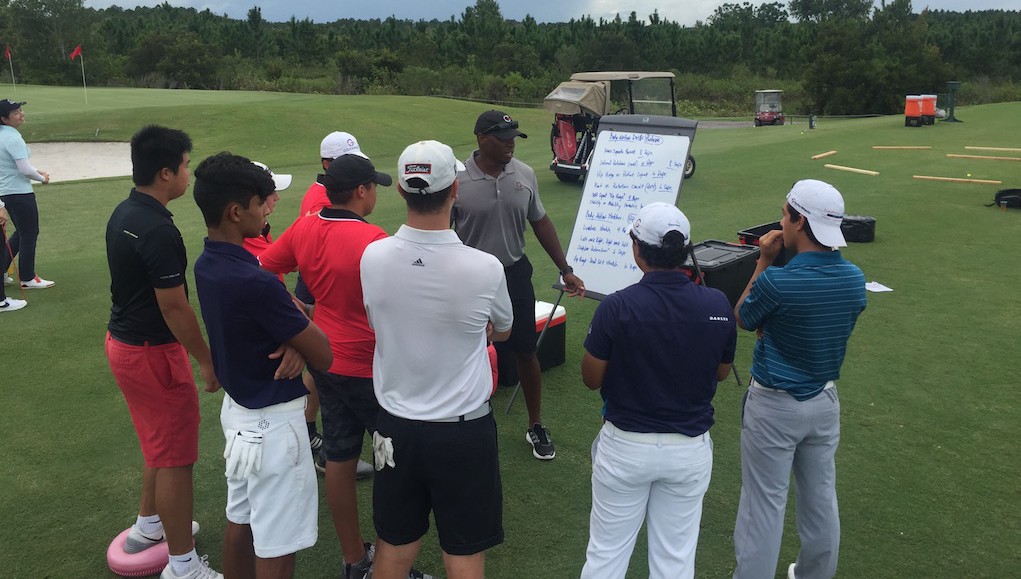
The old, authoritarian approach to coaching does not work with this generation of junior golfers. We live in a vastly different era than what we as coaches and parents experienced, and referencing “what I did when I was your age” is simply not taking the time to understand the current junior golfers.
Communication is the foundation to coaching, and taking the time to understand how to better communicate with junior players will allow for faster, more in-depth understanding, more detailed and precise practice — and the ultimate goal, improved results and enjoyment.
When looking at the development and progression of the junior golfer, we must first understand the personality traits of this player. Using tools like a mental golf workshop profile allows coaches to have a better understanding of a player’s mind and how to best coach the player in a way that will appeal to his or her mindset.
So many golfers are in a rush to get results, and it’s especially prevalent in today’s junior golfers. There are always going to be standouts in junior golf, the players who have advanced far faster than their age group. The unfortunate thing is that most parents compare their child to these standout players, which often isn’t fair. A few years later, the playing field can level out, especially in a life-long game like golf.
Our role as coaches and parents is to help our junior golfers in understanding that small, incremental improvements are ones that build strong foundation and character. With these consistent improvements players will gain confidence, understanding and can to progress to a level of performance that they never imagined.
How do we do this? Here are 6 keys to coaching the current generation of junior golfers.
Developing the athlete in every player
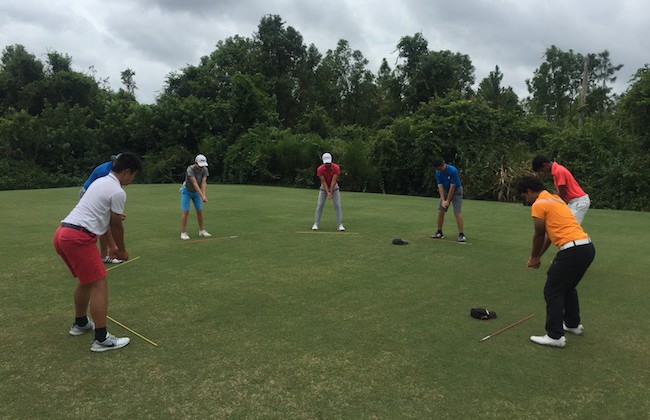
This generation of golfers as a whole spends less time outdoors, less time playing sports and less time in good posture than generations past. This means players, coaches and parents need to spend far more time and effort developing the athlete in junior golfers.
Starting from the ground up, there needs to be a focus on connection to the ground through balance and stability, followed by creating the correct hinge in the pelvis and consistent posture. This will allow junior golfers to make far more consistent, dynamic movements and maintain better connection and angles throughout the motion.
Of course, physical screenings will also help target imbalances in a young golfer’s body, which when combined with proper posture and mechanics helps reduce the chance of injury — for the rest of their junior golf careers and beyond.
Playing the instant-gratification game
We all live in a world fueled by instant gratification. Cell phones and social media allows us all the instant gratification of getting what we want when we want it for the most part, and this is especially true in younger golfers. Waiting for results is something that players are just not willing to do, and this hurts development when a junior golfer’s “buy in” to change and hard work has weakened.
Coaching juniors needs to be structured around players feeling a sense of achievement throughout their lesson, practice and the process of becoming a better player.
Becoming a tech-privy coach
The current generation of junior golfers is more visual than ever. They spend an enormous percentage of their free time looking at screens, whether it be their cell phones, computers or televisions.
Coaches should use this to their advantage with visual technologies. K-Vest, Zepp, Blast Golf, Trackman and other new technologies have visual components that can help the growth and development of junior golfers. They can aid them in immediately feeling the correct motion and getting instant feedback, as well as provide a sense of success and achievement (which you now know is vital to improvement).
Bio-feedback training is one of the greatest inclusions to our sport. While it has been around for a while, tools such are K-Vest allow us to help junior golfers gain improved awareness of their body motions. This allows golfers (especially juniors) to feel a stronger trust in the changes and motions they are making. It also offers them instant feedback when they make the correct movement patterns.
Creating a timeline for success
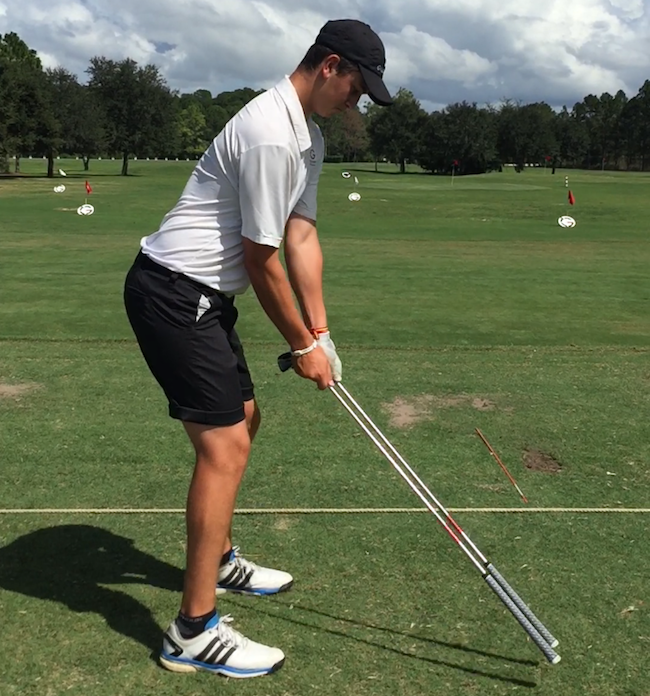
Competition is tougher than ever in junior golf, and as a result, heightened pressure and expectations are being placed on junior players from every angle. It is very easy for players to overestimate their current level of play by confusing where they want to be as a player with where they really are, and their parents, coaches and peers can make the matter worse.
The first step to creating a timeline for success is for a junior golfer to honestly assess their game through tournament average, GHIN Handicap, skills testing, Trackman combines and other assessment tools. Once a player has assessed their game, then it’s time to make a realistic timeline to succeed.
Goal setting is extremely important in young players, as it gives them something to work toward. Players need to be conscious of HOW to set goals. Having goals like “get into a great college” or “play on the PGA Tour” are great, because they gives them hope, but big, broad goals can also lead to frustration along the way. Players need to break their major goals into smaller, more manageable and attainable goals. They can set goals daily, weekly, monthly, etc., and this way they are going to get a sense of achievement while understanding the natural progression to becoming a great player.
Mastering the plan
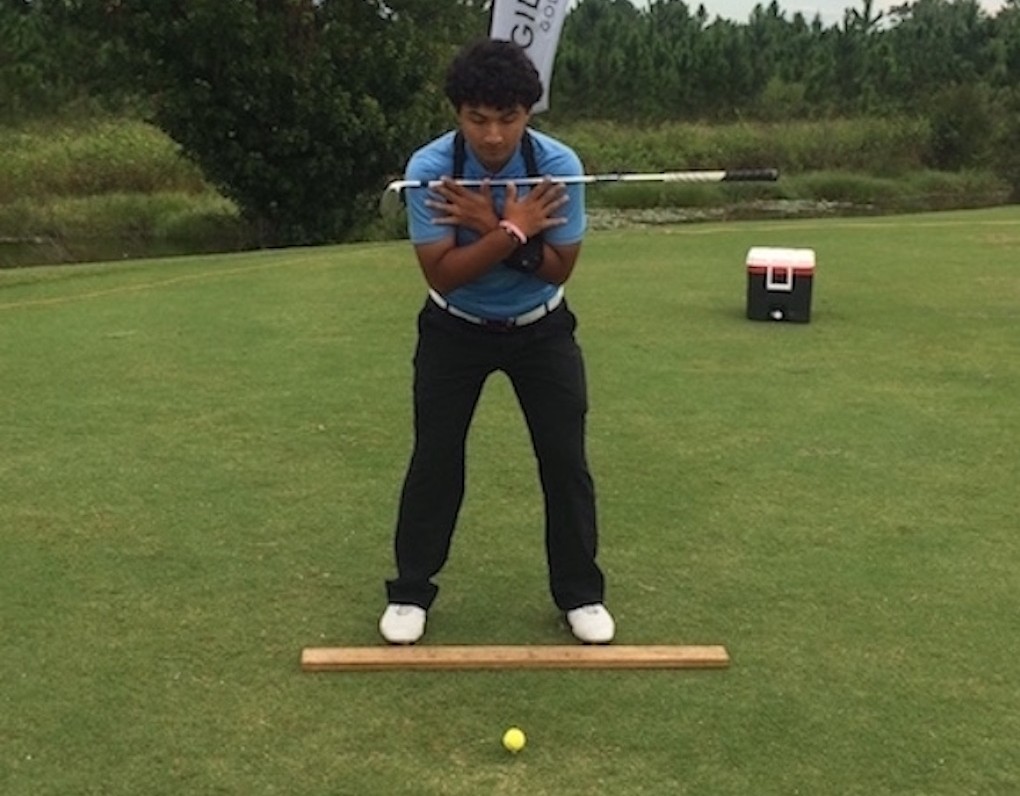
Having a plan is like having a GPS; it allows juniors to remain on course, and when they detour slightly it gives them direction to get back on the right track. That’s why it’s so important that junior players develop a plan for every area of their game. This plan needs to include:
- Athletic/Fitness Drills: Drills that are based around creating correct posture, body motion and dynamic movements matching that of the golf swing.
- Generic Drills: To be completed away from the golf ball, but with specific movement patterns relating to the golf swing.
- Motion Drills: These drills include the golf ball, and are split up into blocks/repetitions.
Serious junior golfers need a plan for every area of their game. But first, they must understand WHAT they are working on and WHY they are working on it. By doing this, it ensures they understand their plan and the improvement this plan will offer.
A plan must include two-to-three different phases of training:
- Technical training
- Pre-competition training
- Competition training
Breaking a plan into different phases allows players to work very hard on swing adjustments, short game, putting, mental process, and strength and conditioning during times between tournaments and in the offseason. Prior to playing tournaments, junior golfers want to reduce the technical work and increase the focus on routines, feel and start getting in to a more competitive mindset to aid with peak performance.
Challenging your junior golfers
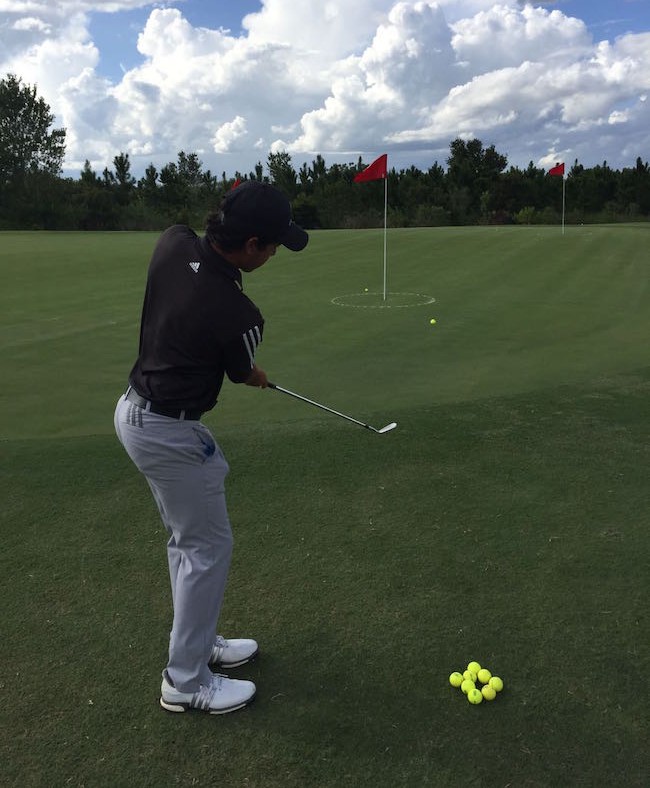
Junior Players are more competitive than ever, and as opposed to countless hours of blocked practice (practicing the same skill over and over in large blocks/reps), juniors need to work through their plan and then finish each session by testing their skills and competing.
During practice, set up small skills challenges/games against other players, coaches and parents, etc. This will have them leaving the practice range in a competitive mindset, and they’ll learned to be less focused on technique when they’re under the gun.
- LIKE54
- LEGIT4
- WOW2
- LOL0
- IDHT2
- FLOP1
- OB1
- SHANK17
Instruction
The Wedge Guy: The easiest-to-learn golf basic

My golf learning began with this simple fact – if you don’t have a fundamentally sound hold on the golf club, it is practically impossible for your body to execute a fundamentally sound golf swing. I’m still a big believer that the golf swing is much easier to execute if you begin with the proper hold on the club.
As you might imagine, I come into contact with hundreds of golfers of all skill levels. And it is very rare to see a good player with a bad hold on the golf club. There are some exceptions, for sure, but they are very few and very far between, and they typically have beat so many balls with their poor grip that they’ve found a way to work around it.
The reality of biophysics is that the body moves only in certain ways – and the particulars of the way you hold the golf club can totally prevent a sound swing motion that allows the club to release properly through the impact zone. The wonderful thing is that anyone can learn how to put a fundamentally sound hold on the golf club, and you can practice it anywhere your hands are not otherwise engaged, like watching TV or just sitting and relaxing.
Whether you prefer an overlap, interlock or full-finger (not baseball!) grip on the club, the same fundamentals apply. Here are the major grip faults I see most often, in the order of the frequency:
Mis-aligned hands
By this I mean that the palms of the two hands are not parallel to each other. Too many golfers have a weak left hand and strong right, or vice versa. The easiest way to learn how to hold the club with your palms aligned properly is to grip a plain wooden ruler or yardstick. It forces the hands to align properly and shows you how that feels. If you grip and re-grip a yardstick several times, then grip a club, you’ll see that the learning curve is almost immediate.
The position of the grip in the upper/left hand
I also observe many golfers who have the butt of the grip too far into the heel pad of the upper hand (the left hand for right-handed players). It’s amazing how much easier it is to release the club through the ball if even 1/4-1/2″ of the butt is beyond the left heel pad. Try this yourself to see what I mean. Swing the club freely with just your left hand and notice the difference in its release from when you hold it at the end of the grip, versus gripping down even a half inch.
To help you really understand how this works, go to the range and hit shots with your five-iron gripped down a full inch to make the club the same length as your seven-iron. You will probably see an amazing shot shape difference, and likely not see as much distance loss as you would expect.
Too much lower (right) hand on the club
It seems like almost all golfers of 8-10 handicap or higher have the club too far into the palm of the lower hand, because that feels “good” if you are trying to control the path of the clubhead to the ball. But the golf swing is not an effort to hit at the ball – it is a swing of the club. The proper hold on the club has the grip underneath the pad at the base of the fingers. This will likely feel “weak” to you — like you cannot control the club like that. EXACTLY. You should not be trying to control the club with your lower/master hand.
Gripping too tightly
Nearly all golfers hold the club too tightly, which tenses up the forearms and prevents a proper release of the club through impact. In order for the club to move back and through properly, you must feel that the club is controlled by the last three fingers of the upper hand, and the middle two fingers of the lower hand. If you engage your thumbs and forefingers in “holding” the club, the result will almost always be a grip that is too tight. Try this for yourself. Hold the club in your upper hand only, and squeeze firmly with just the last three fingers, with the forefinger and thumb off the club entirely. You have good control, but your forearms are not tense. Then begin to squeeze down with your thumb and forefinger and observe the tensing of the entire forearm. This is the way we are made, so the key to preventing tenseness in the arms is to hold the club very lightly with the “pinchers” — the thumbs and forefingers.
So, those are what I believe are the four fundamentals of a good grip. Anyone can learn them in their home or office very quickly. There is no easier way to improve your ball striking consistency and add distance than giving more attention to the way you hold the golf club.
More from the Wedge Guy
- The Wedge Guy: Golf mastery begins with your wedge game
- The Wedge Guy: Why golf is 20 times harder than brain surgery
- The Wedge Guy: Musings on the golf ball rollback
- LIKE83
- LEGIT13
- WOW5
- LOL1
- IDHT0
- FLOP4
- OB1
- SHANK8
Instruction
Clement: Stop ripping off your swing with this drill!

Not the dreaded headcover under the armpit drill! As if your body is defective and can’t function by itself! Have you seen how incredible the human machine is with all the incredible feats of agility all kinds of athletes are accomplishing? You think your body is so defective (the good Lord is laughing his head off at you) that it needs a headcover tucked under the armpit so you can swing like T-Rex?
- LIKE0
- LEGIT2
- WOW2
- LOL0
- IDHT0
- FLOP0
- OB0
- SHANK2
Instruction
How a towel can fix your golf swing

This is a classic drill that has been used for decades. However, the world of marketed training aids has grown so much during that time that this simple practice has been virtually forgotten. Because why teach people how to play golf using everyday items when you can create and sell a product that reinforces the same thing? Nevertheless, I am here to give you helpful advice without running to the nearest Edwin Watts or adding something to your Amazon cart.
For the “scoring clubs,” having a solid connection between the arms and body during the swing, especially through impact, is paramount to creating long-lasting consistency. And keeping that connection throughout the swing helps rotate the shoulders more to generate more power to help you hit it farther. So, how does this drill work, and what will your game benefit from it? Well, let’s get into it.
Setup
You can use this for basic chip shots up to complete swings. I use this with every club in my bag, up to a 9 or 8-iron. It’s natural to create incrementally more separation between the arms and body as you progress up the set. So doing this with a high iron or a wood is not recommended.
While you set up to hit a ball, simply tuck the towel underneath both armpits. The length of the towel will determine how tight it will be across your chest but don’t make it so loose that it gets in the way of your vision. After both sides are tucked, make some focused swings, keeping both arms firmly connected to the body during the backswing and follow through. (Note: It’s normal to lose connection on your lead arm during your finishing pose.) When you’re ready, put a ball in the way of those swings and get to work.

Get a Better Shoulder Turn
Many of us struggle to have proper shoulder rotation in our golf swing, especially during long layoffs. Making a swing that is all arms and no shoulders is a surefire way to have less control with wedges and less distance with full swings. Notice how I can get in a similar-looking position in both 60° wedge photos. However, one is weak and uncontrollable, while the other is strong and connected. One allows me to use my larger muscles to create my swing, and one doesn’t. The follow-through is another critical point where having a good connection, as well as solid shoulder rotation, is a must. This drill is great for those who tend to have a “chicken wing” form in their lead arm, which happens when it becomes separated from the body through impact.
In full swings, getting your shoulders to rotate in your golf swing is a great way to reinforce proper weight distribution. If your swing is all arms, it’s much harder to get your weight to naturally shift to the inside part of your trail foot in the backswing. Sure, you could make the mistake of “sliding” to get weight on your back foot, but that doesn’t fix the issue. You must turn into your trial leg to generate power. Additionally, look at the difference in separation between my hands and my head in the 8-iron examples. The green picture has more separation and has my hands lower. This will help me lessen my angle of attack and make it easier to hit the inside part of the golf ball, rather than the over-the-top move that the other picture produces.


Stay Better Connected in the Backswing
When you don’t keep everything in your upper body working as one, getting to a good spot at the top of your swing is very hard to do. It would take impeccable timing along with great hand-eye coordination to hit quality shots with any sort of regularity if the arms are working separately from the body.
Notice in the red pictures of both my 60-degree wedge and 8-iron how high my hands are and the fact you can clearly see my shoulder through the gap in my arms. That has happened because the right arm, just above my elbow, has become totally disconnected from my body. That separation causes me to lift my hands as well as lose some of the extension in my left arm. This has been corrected in the green pictures by using this drill to reinforce that connection. It will also make you focus on keeping the lead arm close to your body as well. Because the moment either one loses that relationship, the towel falls.


Conclusion
I have been diligent this year in finding a few drills that target some of the issues that plague my golf game; either by simply forgetting fundamental things or by coming to terms with the faults that have bitten me my whole career. I have found that having a few drills to fall back on to reinforce certain feelings helps me find my game a little easier, and the “towel drill” is most definitely one of them.
- LIKE12
- LEGIT2
- WOW2
- LOL0
- IDHT0
- FLOP2
- OB0
- SHANK8
-

 19th Hole2 weeks ago
19th Hole2 weeks agoJohn Daly stuns fans into silence with brutal opening tee shot on PGA Tour Champions
-

 19th Hole6 days ago
19th Hole6 days agoThings got heated at the Houston Open between Tony Finau and Alejandro Tosti. Here’s why
-

 19th Hole3 days ago
19th Hole3 days agoReport: Tiger Woods has ‘eliminated sex’ in preparation for the 2024 Masters
-

 19th Hole2 weeks ago
19th Hole2 weeks ago2-time major champ announces shock retirement from the sport at age of 33
-

 19th Hole3 weeks ago
19th Hole3 weeks agoEdoardo Molinari reveals the latest PGA Tour golfer to turn down ‘good offer’ from LIV Golf
-

 19th Hole2 weeks ago
19th Hole2 weeks agoCharlie Woods finds it tough going on American Junior Golf Association debut
-

 19th Hole3 weeks ago
19th Hole3 weeks agoScottie Scheffler had an interesting response when asked how he ‘quiets the noise’ following Players victory
-

 19th Hole5 days ago
19th Hole5 days agoAddiction, spinal fusion, and scam artists – Everything Anthony Kim revealed in candid interview with David Feherty

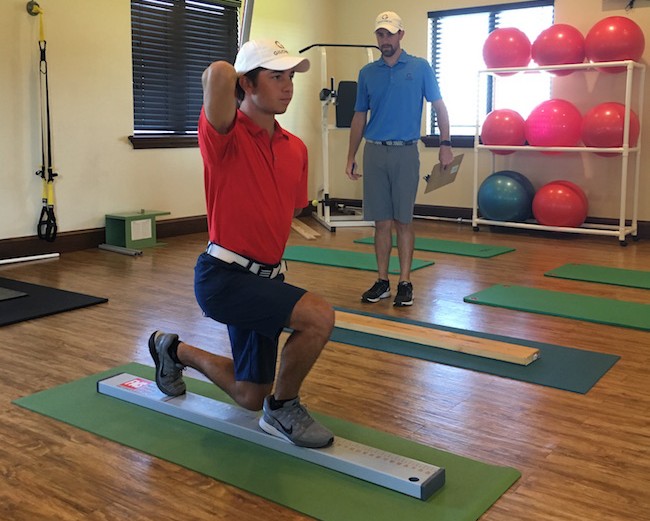
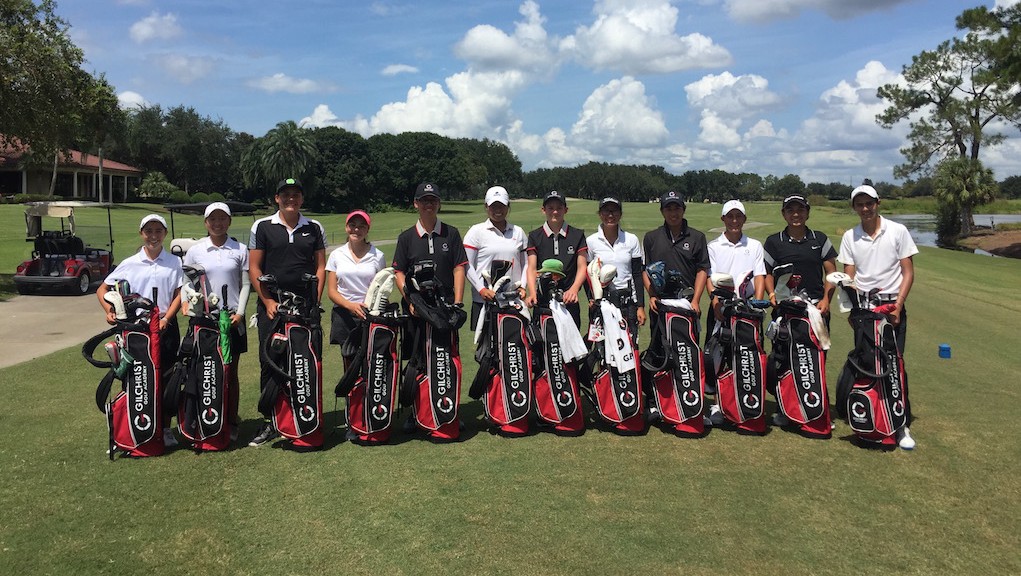
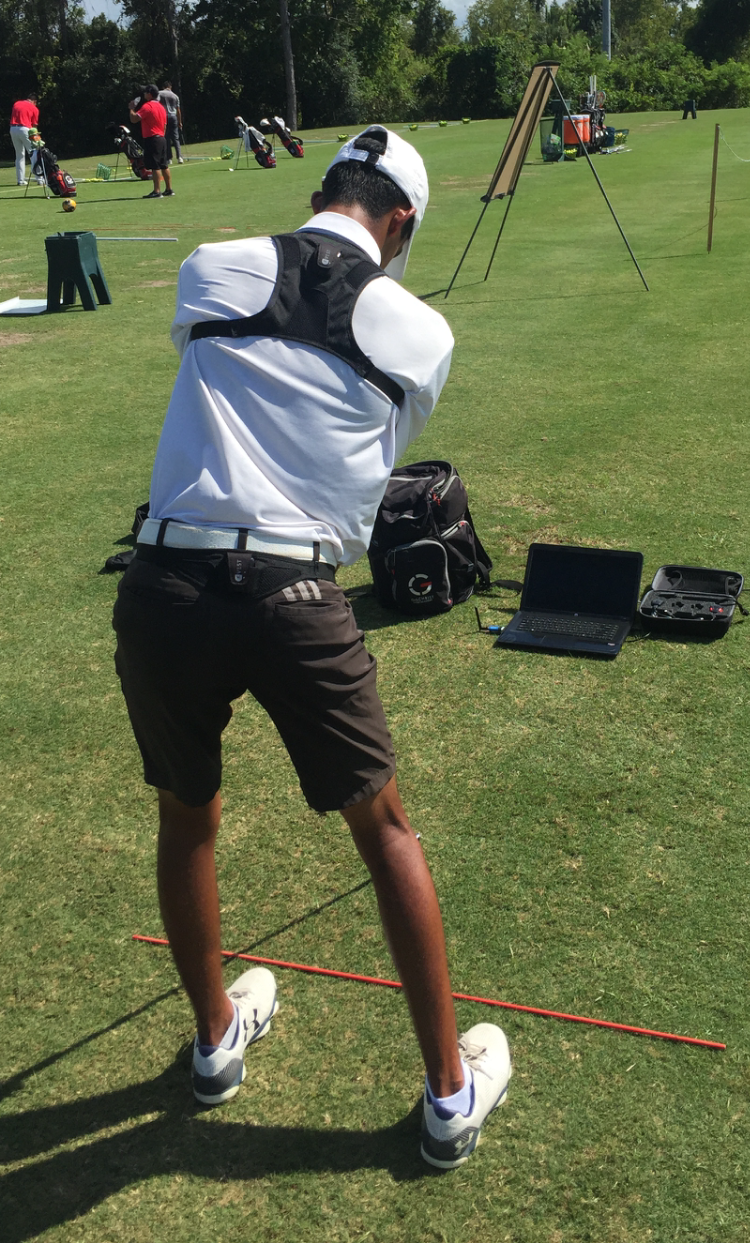


















Steven
Nov 10, 2016 at 2:48 pm
It is funny how many of the comments completely miss the arguments in the article. The article acknowledges that people in previous years would “find it in the dirt” but that the new generation doesn’t learn that way. Grant may have said the “game” is different, but the article is talking about the way people learn. He is 100% correct. New neuroscience research indicates “finding it in the dirt” is the least effective way to learn a motor skill. While some people may have succeeded doing that (there are exceptions), most just found a flawed swing. Spaced, variable, interleaved, and assessment based learning is the fastest way to develop motor skills (and educational learning as well, but not part of this article).
The article also discusses the new generation of golfer. The argument here is that “finding it in the dirt” won’t motivate this generation and will cause them to play other sports or not really improve. Visual aids, technology, and other devices are both fun and the way millennials encode information for learning. Trying to get a feel player to use tech doesn’t work. I think Grant’s argument is that the new generation is more visual/tech learners than the older feel players.
I applaud Grant’s work because it is based on research. If the data indicates something doesn’t work, then let’s stop using the same method. Let’s progress to new teaching.
Smokin' Gun
Nov 10, 2016 at 9:01 pm
Yawn…
4right
Nov 8, 2016 at 10:36 am
The opening sentence should have read “in my opinion”. What kind of life experiences can you have at your age saying the way a person like me teaches juniors is better??? I sat next to Harvey Penick in Austin, you know who Harvey was right? He taught the best way ever, you have no clue what you are talking about… I’m 83 years old and have played golf over 75 years…
Looper
Nov 8, 2016 at 11:10 am
The author is correct in saying the game has changed… They play now using a golf ball, golf clubs, and a golf course, trying to make it the least amount of strokes possible… Ok, ok, the game is exactly the same, it hasn’t change in any way shape or form. I play today like I played 30 years ago… Crazy article, zero experience…
Stooooop typing!
Nov 7, 2016 at 9:12 pm
Seriously! What’s with the long stupid comments
Rors
Nov 7, 2016 at 9:37 pm
Best comment ever!!!!
Grant Balcke
Nov 7, 2016 at 7:55 pm
Thank you all for your comments and feedback on your views on Junior Golf and every comment has its valid points.
The goal behind this article is the educate Coaches, Players and Parents to the differences in the game now, How to better communicate the message to Juniors and the highlight the importance of having a PLAN to get a player from where they are NOW to their GOAL.
I have taught Junior players in 3 countries over the past 12 years and from all demographics. Beginner, Tour Player, Young, Middle aged, Elderly, Wealthy and the less fortunate and regardless of the level, the financial backing a player has they still need a PLAN and to understand WHAT they are working on and towards and WHY they are working on it.
I also grew up ‘Digging it out of the dirt’ ‘Playing local Muni Courses’ and yes Commitment, Heart, Determination and many other attributes make for great players.
Great players will come from a variety of different backgrounds, different countries and different opportunity and there is no ONE way to do it all we can try to do as Coaches and Instructors is give the best possible opportunity to each and every player.
A coach should never feel HE / SHE is the reason a player went to college, went to the next level, all we can do is give the best advice and opportunity possible and treat every player as the individual they are.
If player and Coach or Player and Parent can share a common goal and be working in the same direction towards that goal anything is possible and this is true no matter the age or level of play.
Growing the game of golf and maintaining the enjoyment at every level is always extremely important and something that Parents and Coaches should always place as top priority.
Lets give the best advice we can from the knowledge and experience we have both as coaches and as players to help the next generation of players achieve their goals.
Mark
Nov 7, 2016 at 2:02 pm
I coach HS golf. I’ve sent three players to the next level in the last four years. I focus on competition and short game. I see so many of these juniors with these pretty swings, but no heart. If they end up under a tree, half of them can’t figure out how to get up and down. Drive for show, putt for dough.
prime21
Nov 7, 2016 at 5:01 pm
You’ve “sent” or you’ve “watched” 3 players go to the next level? How does drive for show, putt for dough even apply here? Are you teaching them to putt from under a tree? Are they recovering from being under a tree (3 shots) or truly getting up and down from under a tree? Either way, does that really measure the amount of “heart” they have? Your commentary leaves me with more questions than answers, which is never good for a post. Perhaps YOU should have put more heart into your effort here.
Smokin' Gun
Nov 7, 2016 at 12:51 am
Don’t agree that this is what it takes. The difference between excellence and mediocrity is COMMITMENT!!! Anyone could be great, you are burning out these juniors…
Rors
Nov 7, 2016 at 11:09 am
On point!!!
Smokin' Gun
Nov 7, 2016 at 12:47 am
This is basically saying kids going about their golf in other ways will not get to a higher level…This article is so misleading in every way. I’m in my mid 20’s, have played golf since I was about 8 or 9. I Played golf, no lessons, just me, my brothers, and my pop. I played to scratch at about 14, and won several events, was even recruited by my university. Determination, heart, and commitment… I would put how I did it against any of your machines any day…
Sometimes a Smizzle
Nov 7, 2016 at 9:23 pm
Not to mention some luck finding a good swing or your pop taught you well. If you can play to a scratch handicap at 14 then i hope you are better now.
Smokin' Gun
Nov 7, 2016 at 9:58 pm
Play to +3.1. I am working fulltime now, but still play all the big USGA amateur events. Got thru the first round of last years US open Q, only to lay an egg the next round. I have qualified for my state open the last 3 years, and my highest finish is T10… Will remain an Am just because it’s not my job, just my passion… My dad sucked as a golfer, but was a major champion as a dad… Never forced, never yelled, never disappointed, he said things just are what they are… He’s 91 and still plays. Thanks for the support…
Pingback: 6 keys to coaching the current generation of junior golfers – Swing Update
Fuzz
Nov 6, 2016 at 3:43 pm
Agree 100% with all of this, great summary. Only thing I would say is the players pictured probably represent the top 1% of junior players. Keep it fun should be a top priority, it’s more than ok to have a generation of casual golfers as well.
Par4
Nov 7, 2016 at 12:30 am
Probably less than 1%, and one thing they forget to mention is the cost of all this. 50-75K a year (including academics) at these golf schools. IMG, Bender, etc… Growing up there was no way my parents could afford that, let alone I would never want them too… I grew up on a dusty muni, learned to take it out of the dirt, rocks and stuff, and loved everyday I played. My dad would toss the ball around and I would find a way. I see kids on the range everyday being instructed, nothing wrong with it, but they don’t know how to play… My dad was the one and only influence I needed, he helped me learn to play my way. I Played in high school and was fortunate enough to play 3 years in college.
Par4
Nov 7, 2016 at 12:34 am
Agreed, plus coaching like that is ultra expensive. Makes the percentage even less than 1%. The one problem I witness is that these kids are all coached up and they don’t have the most important ingredient, they can’t play a lick on course…
prime21
Nov 7, 2016 at 4:53 pm
What kids are you looking at? An example of a few does not make for an example of all. The one formula which will never change is that if someone wants it bad enough, regardless of their age, they will work it out. However, determination alone cannot defeat poor form/mechanics, period, no matter what sport you are talking about. Obviously “your way” worked for you, but what if your goal(s) had been to play at a D1 college, or on Tour? Would you have accomplished your goals then? I am not coming at YOU in any way, shape, or form, I am, however, calling out your use of a blanket statement, which I find to be simply ridiculous. “I did it this way, so everyone should do it this way” is a selfish, jaded perspective that only carries weight for the individual that made the statement. Much like your statement, there are many “blanket” comments used in this article as well, though I believe you both had the best of intentions in mind. Trying to figure out how to be on the “same wavelength” as today’s youth is certainly a challenge, especially if one is 10 to 20 years older than their student. However, it is no different now than it used to be, in that a great coach must figure out how to communicate with each of their students on a personal level. If we compared 1984 to 2000 and 2000 to 2016 it would be easy to spot differential. Great instructors, however, will be able to spot the similarities. They will be able to communicate with their 10 year old student just as well as their 16, 28, and 65 year old students. Is your father a great instructor? I’m guessing probably not. Was your father a great instructor for you? Absolutely he was. Because in the end, all great instructors share 1 common trait, they CARE about their student & they care about the outcome. Having the ability to connect on a personal level is what separates good instructors from GREAT instructors, period. Then and only then can a great Coach determine the best course of action for their student, using whatever aid, technology, or form of feedback that will work best for each individual student.
The article states, “Coaching juniors needs to be structured around players feeling a sense of achievement throughout their lesson, practice and the process of becoming a better player”. Should this be viewed any different with a student at the age of 40? I think not. Differentiation makes things harder, not easier. It is the same now as it was then, and as it always will be, successful instruction occurs when Student & Teacher are on the same wavelength, working towards achieving the same goal(s). “Right and Wrong” can only be recognized through trial and error and should be determined on a case by case basis, period. What worked for one may very well work for another, but then again, it also may prove to be detrimental. That is up to each individual to decide. There is no perfect for everyone, but everyone can find perfect for themselves!
Rors
Nov 7, 2016 at 8:25 pm
Blah blah blah…